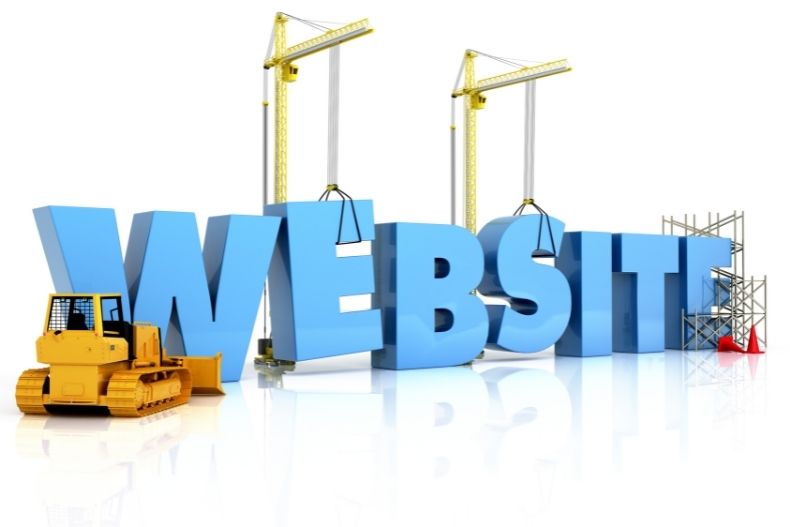Whether you’re a fledgling startup or an established enterprise looking to refresh your digital footprint, creating a new website from scratch can seem daunting. However, with a strategic approach, it’s an achievable and ultimately rewarding endeavor. This article will guide you through the essential steps to bring your brand’s digital home to life.

1. Define Your Purpose and Goals: The ‘Why’ Behind Your Website
Before diving into design or content, the crucial first step is to clearly define what you want your website to achieve. Setting measurable goals will provide a clear roadmap for the entire project and guide every design, content, and marketing decision.
Actionable Tips:
- Ask yourself: What role will my website play in my overall business strategy?
Will it generate leads, sell products, showcase a portfolio, or simply provide information? - Use the SMART goals framework:
- Specific: What exactly do you want the website to do?
- Measurable: How will you track success?
- Achievable: Is this goal realistic with your budget/time?
- Relevant: Does this goal align with your brand’s mission?
- Time-bound: What’s the timeline for achieving this?
- Identify primary goals (e.g., “increase online sales by 25% in 6 months”) and secondary goals (e.g., “grow email list by 500 subscribers in 3 months”).
Sample Scenario:
Imagine you’re a freelance interior designer launching your first website. Your primary goal might be to attract new clients through a professional online presence. Your SMART goal could be:
“Get 10 client inquiries through the contact form within the first 60 days of launching the site.”
To support that, you may include:
- A dedicated services page with pricing info
- A contact form prominently placed on the homepage
- A blog sharing home design tips (to build SEO and trust)
- Testimonials and a portfolio page showcasing past work
2. Identify Your Target Audience: Who Are You Talking To?
Understanding your target audience is paramount to creating a website that truly resonates. Who are you trying to reach? Consider their demographics (age, location, gender, income), psychographics (interests, values, lifestyle), pain points, and online behavior. Knowing your audience will guide your design choices, the tone of your content, and the overall user experience you aim to deliver.
3. Choose Your Domain Name and Hosting: Your Digital Address and Foundation
Your domain name is your website’s unique address on the internet (e.g., www.yourbrand.com). It should be memorable, easy to spell, relevant to your brand, and ideally, include your brand name. Keep it concise and avoid hyphens or numbers if possible, as these can make it harder for users to remember. Many hosting providers also offer domain registration services.
Web hosting is the service that stores your website’s files and makes them accessible online. There are various types of hosting, including shared hosting (most affordable, good for small sites), VPS hosting (a balance of shared and dedicated), dedicated hosting (an entire server for your site, for high traffic), and cloud hosting (uses multiple servers for scalability). Choosing the right hosting plan depends on your website’s size, expected traffic, and budget. Some website builders also include hosting in their packages.
4. Plan Your Website’s Structure and Content: The Blueprint
With your goals and audience defined, it’s time to plan your website’s architecture and content. Start by creating a sitemap – a hierarchical list of all the pages you plan to have. Think about the essential pages every website needs, such as a homepage, about us page, products/services pages, contact page, and potentially a blog.
5. Design and Development: Bringing Your Vision to Life
Platforms like Wix, Squarespace, Shopify, and GoDaddy offer user-friendly drag-and-drop interfaces and templates, making it possible to build a professional-looking website without coding knowledge.
WordPress is a popular CMS that offers great flexibility and control, with numerous themes and plugins. It has a steeper learning curve than website builders but provides more customization options.
For a completely custom design and complex functionalities, hiring a web design and development agency or freelance web developers is the way to go. This often involves distinct roles:
- UX (User Experience) Designers: Focus on the overall feel and usability of the site, ensuring it’s intuitive and meets user needs.
- UI (User Interface) Designers: Focus on the visual design, including layouts, colors, typography, and branding elements.
- Front-End Developers: Take the visual designs and bring them to life in the browser using languages like HTML, CSS, and JavaScript. Finding skilled front-end developers is crucial for a polished and responsive user interface. There are many platforms and services available if you need help hiring good front end developers.
- Back-End Developers: Build and maintain the server-side logic, databases, and integrations that power the website’s functionality.
Regardless of the path, ensure your website design is consistent with your brand identity (logo, colors, fonts), mobile-responsive (looks good on all devices), and prioritizes a positive user experience.
Frequently Asked Questions (FAQs)
How much does it cost to build a website from scratch?
Website costs vary widely depending on your needs. A basic DIY website using platforms like Wix or Squarespace can cost between $100 to $500 annually, including domain and hosting. Hiring a professional designer or developer can range from $1,000 to $10,000 or more, depending on complexity, custom features, and maintenance requirements.
What are the legal pages every website should have?
At a minimum, every website should include a Privacy Policy and Terms and Conditions page to comply with legal and consumer protection standards. If your website collects data, uses cookies, or handles e-commerce, these pages are especially critical. Some industries may also require accessibility statements or disclaimers.
How long does it take to launch a website?
The timeline depends on your project scope and how you’re building the site. A simple website using a builder can go live in a day or two. A custom website, especially with complex features or third-party integrations, may take 4 to 12 weeks from planning to launch. Clear goals, a solid timeline, and responsive collaboration can speed up the process.
Final Thoughts
Creating a website from scratch isn’t just about choosing the right template or color palette—it’s about shaping your brand’s digital identity. Whether you’re bootstrapping with a DIY builder or investing in a professional team, what matters most is clarity of purpose and a commitment to providing a seamless experience for your audience. Prioritize functionality, tell your story authentically, and keep your goals front and center. With thoughtful planning and execution, your website can become one of your strongest business assets—built to inform, engage, and grow with your brand.
Once you’re confident everything is working as it should, it’s time to launch!
Your website is the cornerstone of your online identity, so make it a strong, engaging, and effective representation of your brand.
Ready to take the next step?
If you’re building a website as part of launching a business, don’t stop here. Explore our article on the seven essential steps to help you transform your idea into a profitable business and get actionable insights to turn your vision into reality.











